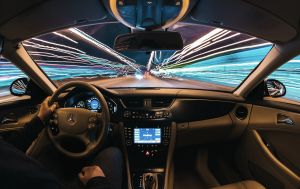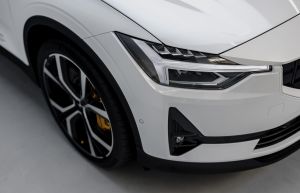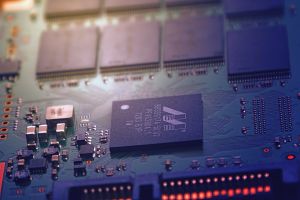Test Owner
During its Paris summit this week, the director of AWS France announced the availability of Amazon Bedrock generative AI tools for French customers, alongside other models provided to users.
At the beginning of 2023, Amazon unveiled its own offering of general artificial intelligence for its cloud customers: Amazon Bedrock. Until now, this tool has been exclusively available in certain regions of its cloud service. The company took advantage of its Amazon Web Services Summit in Paris this week to officially launch its tool in the Europe (Paris) region. This means that French customers will be able to utilize Amazon Bedrock while ensuring that the data processed by the tool remains in Europe, resulting in lower latency times than before. Amazon states that several hundred customers are already using its solution in France, including Air Liquide, EDF, Engie, and Accor.
Amazon Bedrock is a tool that allows users to leverage various AI models available in the market, adapt them to specific scenarios with private data, and ultimately build applications. The service is accessible via an API, and the company assures that customer data is not used for training the models. However, this data can be used within secure instances focused on specific contexts, thus enhancing the quality and relevance of responses.
The company offers its "in-house" models with Bedrock, such as Amazon Titan, as well as those from major market players like:
- Meta's LLama 2
- Anthropic's various Claude models
- The open-source image generation model Stable Diffusion
- The LLMs offered by the French Mistral AI, with Mistral Large previously only available on Azure. Mistral has also announced the availability of its new language model, Mistral Large, on Bedrock. The French company has already offered two of its models, Mistral 7B and Mistral 8x7B, on the Amazon platform since February.
In addition to Bedrock, Amazon's AI efforts in the cloud are also reflected in AWS Trainium chips, dedicated to AI model training, and AWS Inferentia for accelerating the performance of generative AI-based applications.
Plug-In Hybrid Sales Surpass Battery-Electric Vehicles in Europe: A Shift in the Automotive Landscape
In February, there was a significant shift in the European automotive market as plug-in hybrid vehicle sales outpaced those of battery-electric vehicles, marking a departure from the prevailing trend.
Data released by the industry association ACEA revealed a notable increase of 12 percent in plug-in hybrid sales last month, reaching a total of 72,376 units compared to February 2023. In contrast, sales of battery-electric vehicles experienced a slightly lower growth rate of 10.3 percent during the same period.
Preliminary figures from market analyst Dataforce, excluding statistics from several smaller countries, indicated that both plug-in hybrids and battery-electric vehicles exhibited similar growth rates. Specifically, full-electric car sales rose by 11 percent, while plug-in hybrids saw a growth rate of 10.9 percent, according to Dataforce data.
Importantly, plug-in hybrids surpassed the overall market growth rate of 10.3 percent, as reported by ACEA. Similarly, Dataforce figures indicated a market growth rate of 10.3 percent.
The surge in plug-in hybrid sales can be attributed to their role as a transitional technology towards full electrification, particularly as growth in battery-electric vehicle sales slows down. Automakers are increasingly turning to plug-in hybrids to meet their CO2 emissions targets, with the latest models boasting WLTP emissions as low as 19 grams per km and offering more than 100 km of electric-only range.
However, critics argue that plug-in hybrids, often viewed as "compliance" vehicles, may have higher real-world emissions due to users' failure to keep them fully charged. To address this concern, the EU has initiated monitoring of plug-in hybrids with onboard diagnostics and is expected to revise their homologation requirements in the future.
Despite these challenges, executives at Europe's premium brands anticipate stable or increasing plug-in hybrid sales. BMW's sales chief, Jochen Goller, expressed confidence in the steady performance of plug-in hybrid sales in 2024, with potential growth in full-electric models. Similarly, Audi CEO Gernot Dollner and Mercedes CEO Ola Kallenius emphasized their commitment to electric mobility while acknowledging the importance of maintaining flexibility in response to market dynamics.
In a further indication of the continued relevance of plug-in hybrids, Chinese automaker BYD announced plans to introduce a plug-in version of its Seal midsize SUV in Europe, expanding its offerings beyond electric vehicles.
While plug-in hybrid sales lagged behind the market in 2023, there are signs of resurgence. Market share for plug-in hybrids in the EU stood at 7.7 percent at the end of 2023, reflecting a 7 percent decline from the previous year. However, in February, their EU market share was 7.3 percent, fueled by a surge in sales of full-hybrid models.
The best-selling plug-in hybrids in February included the Volvo XC60, Porsche Cayenne, Mercedes GLC, Ford Kuga, and BMW X1. Bjorn Annwall, Volvo Cars' chief commercial officer, highlighted the company's focus on mild- and plug-in-hybrid models, recognizing them as a stepping stone for consumers transitioning to full electrification.
In conclusion, while challenges remain, plug-in hybrids continue to play a significant role in the automotive market's transition towards electrification, offering a viable solution to meet emissions targets while providing consumers with a practical alternative to traditional internal combustion engines.
The 2024 Geneva Auto Show, despite its diminished scale compared to previous iterations, served as a crucial stage for the automotive industry. Notably absent were major German manufacturers such as Mercedes, BMW, Audi, and Volkswagen, alongside prominent Asian brands like Toyota and Hyundai. However, the event witnessed significant unveilings from automakers that did attend, signaling key advancements in the electric and sustainable automotive sector.
Renault, a prominent player at the show, seized the opportunity to unveil its highly anticipated Renault 5 small EV. This retrofuturistic model, priced competitively at less than €25,000, is poised to challenge potential competitors from China. Boasting two battery sizes and up to 400 km range, the Renault 5 is built on the innovative AmpR Small platform. This platform not only enhances cost efficiency by leveraging components from the Renault-Nissan CMF-B platform but also offers a long wheelbase, a flat floor, a low center of gravity, and reduced weight, ensuring optimal performance and agility.
Meanwhile, China's SAIC made a significant impression with two launches: the MG3 small car and the L6 sedan from its new premium brand, IM. These additions underscore SAIC's commitment to innovation and sustainability in the automotive landscape.
Another standout exhibitor was Lucid, the U.S.-based EV maker founded by former Tesla CTO Peter Rawlinson. Making its European debut, Lucid showcased its Air sedan alongside the delayed Gravity SUV. The Air Pure variant, with its rear-wheel-drive configuration, offers an accessible entry point into the luxury EV market, starting at approximately €85,000. On the other end of the spectrum, the high-performance Sapphire variant, featuring three electric motors and lightning-fast acceleration, targets discerning enthusiasts with a price tag of around €230,000.
Dacia, Renault Group's Romanian subsidiary, unveiled a refreshed lineup that underscores its commitment to value-driven innovation. Notable highlights include the updated Spring electric minicar, the new generation Duster small SUV, and a prototype of the Sandrider, Dacia's ambitious Dakar rally-raid contender.
Overall, while the 2024 Geneva Auto Show may have been marked by the absence of some industry heavyweights, it nevertheless served as a stage for significant advancements in electric mobility, sustainable transportation, and value-driven innovation. As the automotive landscape continues to evolve, these unveilings underscore the industry's resilience and commitment to shaping a more sustainable future.
A major advancement in the partnership between Nvidia and Ansys was announced at CES 2024. Ansys' AVxcelerate sensors will now be integrated into Nvidia's Drive Sim simulator, based on the Omniverse platform dedicated to industrial digitization applications. Ansys, a company specializing in digital simulation solutions applied to various fields such as structural mechanics, fluid dynamics, thermal calculation, and electromagnetic analysis, will thus be able to use the simulation results from its sensors to validate and train advanced driver assistance systems (ADAS) for autonomous vehicles.
According to Ansys, integrating AVxcelerate sensors with Nvidia's Drive Sim platform will enhance high-definition, scalable 3D environments. Ansys' precise physical solvers for camera, lidar, and radar sensors will be utilized to generate scenarios in Drive Sim. This integration will provide users of Drive Sim with AVxcelerate Sensors licenses the opportunity to develop, train, test, and validate audiovisual perception systems, while reducing time and costs.
Furthermore, Nvidia emphasizes that integrating AVxcelerate sensor simulation results with Drive Sim provides greater flexibility for developers to work on their autonomous vehicle technology. Nvidia's Omniverse platform allows users to develop 3D workloads based on OpenUSD, an open-source framework developed by Pixar Animation Studios. This flexibility and modularity offered by OpenUSD enable developers to create scalable simulations and serve as a data factory for training artificial intelligence models, according to Ansys.
"Parliamentary Milestone: Germany Votes to Streamline Citizenship Procedures and Embrace Dual Nationality"
The German parliament has granted approval for legislation aimed at facilitating the acquisition of citizenship and removing restrictions on holding dual citizenship last friday. The proposal, advocated by Chancellor Olaf Scholz's center-left, socially liberal coalition, garnered a majority vote of 382-234, with 23 lawmakers abstaining. While the government contends that the move will enhance immigrant integration and attract skilled labor, the main center-right opposition criticizes it, asserting that it could devalue German citizenship.
The approved legislation reduces the residency requirement for citizenship eligibility from eight to five years, or three years in the case of "special integration accomplishments." German-born children automatically become citizens if one parent has been a legal resident for five years, down from the current eight years. Additionally, the law eliminates restrictions on dual citizenship, a departure from the existing requirement that individuals from countries outside the European Union and Switzerland relinquish their previous nationality upon gaining German citizenship.
The government notes that 14 percent of the population, over 12 million out of 84.4 million inhabitants, lacks German citizenship, with around 5.3 million having resided in Germany for at least a decade. Germany's naturalization rate is reportedly below the EU average. In 2022, 168,500 people were granted German citizenship, the highest figure since 2002, with a notable increase in Syrian citizens being naturalized.
Interior Minister Nancy Faeser emphasizes that the reform aligns Germany with European neighbors like France and aims to attract skilled workers. The legislation specifies that those seeking naturalization must be able to support themselves and their dependents, with exceptions for "guest workers" who came to West Germany before 1974 and those who arrived in communist East Germany to work.
The existing requirement for citizenship applicants to adhere to the "free democratic fundamental order" is retained, with the new version explicitly stating that antisemitic and racist acts are incompatible with this commitment. However, the conservative opposition argues that Germany is relaxing citizenship requirements at a time when other countries are tightening theirs, describing the legislation as a "citizenship devaluation bill."
The citizenship law overhaul is part of a broader series of social reforms agreed upon by Scholz's three-party coalition upon taking office in late 2021.
China has emerged as a formidable player in the global electric vehicle (EV) market, and the recent unveiling of Xiaomi Corp.'s first electric vehicle, the SU7, is a testament to the nation's ambitious strides in automotive innovation. Xiaomi's entry into the EV arena, targeting industry giants like Tesla Inc. and Porsche AG, signals a new chapter in the competitive landscape of China's burgeoning electric vehicle sector.
At a grand event hosted at the China National Convention Center, Xiaomi's co-founder and CEO, Lei Jun, proudly introduced the SU7, a five-seat sedan designed to rival luxury car brands. The SU7 boasts an impressive 800-kilometer range per charge, adjustable spoilers, a top speed of 265 kilometers per hour, and a unique array of colors. Xiaomi plans to collaborate with renowned Chinese battery manufacturers, Contemporary Amperex Technology Co. Ltd. and BYD Co., offering consumers single and dual motor configuration options.
Lei Jun's foray into the EV market is backed by a substantial $10 billion investment, aligning with Xiaomi's disruptive impact in the smartphone industry. The SU7, positioned alongside Porsche's Taycan Turbo and Tesla's Model S in terms of performance and technology, is expected to be competitively priced, although the exact figures are yet to be disclosed.
While Xiaomi aims to revolutionize the EV market, it faces challenges in China's evolving regulatory landscape. Constraints such as manufacturing permit limitations prompted Xiaomi to form a partnership with Beijing Automotive Group Co. for EV production. The discontinuation of significant state EV subsidies in 2022 adds another layer of complexity to Xiaomi's entry into the competitive market.
Lei Jun remains undeterred, positioning the SU7 as a viable alternative to higher-priced competitors. Addressing market speculation about the SU7's price, Lei hinted that it would surpass the rumored 99,000 yuan, aligning more closely with higher-end models often priced over 400,000 yuan.
Xiaomi's venture into the electric vehicle market adds a new dimension to China's rapidly evolving automotive landscape. With the SU7's impressive features and Lei Jun's ambitious vision, Xiaomi aims to disrupt the status quo and compete with established players on both the domestic and global fronts. As China continues to assert itself as a key player in the electric vehicle revolution, Xiaomi's SU7 promises to be a pivotal contender, embodying the nation's commitment to driving innovation and sustainability in the automotive sector.
China's commitment to EVs remains evident as the country leads global sales, experiencing a 29% increase in EV sales year-to-date as of September. Xiaomi's entry into the EV market aligns with broader trends, reflecting China's dedication to sustainable transportation.
"MATLAB EXPO U.K.: Unveiling the Evolving Landscape of Embedded Systems with MathWorks Products"
The annual MATLAB EXPO U.K. event attracted 600 delegates this year, offering a platform for users to delve into the latest advancements. The focus of the event spanned networking, technical presentations, and shared experiences covering various technology and science domains, including AI, telecommunications, autonomous systems, robotics, and electrification.
Richard Rovner, VP of Marketing at MathWorks in Natick, Massachusetts, emphasized the significance of MATLAB EXPO in user communication. He pointed out the challenge users face in keeping up with over 130 software products and biannual releases. Despite the wealth of information available on MathWorks' website and through regular digital communications, Rovner highlighted the dedicated and focused nature of the event, providing users with the opportunity to stay abreast of new capabilities and learn from each other.
In a discussion about the increasing complexity of embedded systems, Rovner acknowledged the two-decade growth in complexity across various applications, such as aero, auto, and industrial automation. He emphasized the integration of software into the early stages of the design process, making software design an integral part of the entire workflow.
To illustrate the complexity of embedded systems, Rovner shared an example of an intelligent sensor application incorporating AI. He highlighted the need to select the correct algorithm, plan algorithm training and testing, consider embedded design, deployment to the network, and address trends like digital twins and autonomous operation. Rovner emphasized the relevance of adopting a model-based design perspective, offering a platform that accelerates the development of similar devices.
Jos Martin, Director of Engineering at MathWorks, contributed insights into the evolving nature of system complexity. He noted that what was considered simple two decades ago is now significantly more intricate. Martin emphasized the substantial increase in lines of code, from 30,000 to two million, in contemporary systems. He explained why startups opt for MathWorks products from the outset, citing the necessity for rapid, cost-effective development of complex systems to create valuable products.
Martin also discussed the changing approach to system design, driven partly by necessity. With the market pushing for innovative uses of embedded hardware, complexity has become intrinsic due to the abundance of computational resources available in modern hardware.
Highlighting the importance of productivity, Martin suggested that both large and small organizations should prioritize efficiency. He shared an example of a one-person development organization realizing increased productivity through the use of system-level design tools. Martin advocated for a system model approach, using toolchains to enhance effectiveness and focusing on higher-level design concepts to improve productivity and produce higher-quality designs.
Rovner concluded by advising engineers and developers to consider modeling and simulation tools when designing engineered products. He emphasized that this approach accelerates the transition from prototype to product, reduces costs, and minimizes errors by identifying bugs early in the design process.
The adoption of new technologies plays a pivotal role in business transformation, enhancing productivity and profitability. Gartner has identified five key technologies that businesses should consider incorporating to enrich their operational capabilities.
Here are the five technologies identified by Gartner:
- The Digital Human: While generative AI isn't at the top of the list, the concept of the digital human, a subset of generative AI, takes the spotlight. Digital humans are AI creations that embody real individuals in various aspects, such as personality, appearance, humor, and knowledge. Many companies have adopted digital humans to boost engagement and address the growing interest in AI. However, Gartner cautions against inappropriate behaviors like biases and stereotypes that may arise, emphasizing the need to establish rules.
- Satellite Communications: This technology, exemplified by SpaceX's Starlink, offers low-latency connectivity from low Earth orbit satellites. Satellite communications are garnering increasing interest as they have the potential to revolutionize communication between individuals and businesses. However, Gartner highlights that this emerging industry requires a cautious approach due to its complexity.
- Miniature and Ambient IoT (Internet of Things): This variant of the Internet of Things (IoT) enables tracking and object detection without the need for batteries. This opens the door to more extensive information collection at a lower cost, with the potential to create new ecosystems, business models, and innovative products. However, Gartner warns that social and regulatory issues must be considered before adopting this technology.
- Secure Computation: In a world where data protection is of paramount importance, secure computation allows for calculations while preserving the confidentiality of information. Gartner underscores that implementing secure computing poses challenges in terms of costs, skills, and performance, but emerging technologies such as optical accelerators will play a key role in its realization.
- Autonomous Robots: Autonomous robots, capable of operating with minimal human intervention and adapting to different environments, offer a wide range of business applications. They can perform tasks such as object lifting, surveillance, and data collection. However, Gartner highlights the many challenges associated with these technologies, including limitations in their capabilities and business, legal, and ethical implications.
These five technologies are considered potential drivers of transformation, offering businesses new opportunities and significant advantages. However, their adoption requires careful evaluation and consideration of the various issues associated with each of them.
As the demand for generative AI technology continues to rise, industry giants, including Microsoft, Google, AWS, and OpenAI, are exploring the development of their own custom chips tailored for AI workloads. Contrary to popular belief, the primary driver behind this push isn't chip shortages but rather a strategic shift toward optimizing the efficiency and cost-effectiveness of processing generative AI queries.
Speculation has swirled around efforts by OpenAI and Microsoft to develop custom chips for handling generative AI tasks, with Microsoft collaborating with AMD on a project codenamed Athena and OpenAI rumored to be eyeing potential acquisitions to bolster its chip-design capabilities. In the meantime, Google and AWS have already introduced their own chips for AI workloads in the form of Tensor Processing Units (TPUs) for Google and AWS' Trainium and Inferentia chips.
So, what's motivating these companies to delve into custom chip development? Analysts and experts point to two key factors: the cost of processing generative AI queries and the efficiency of existing chips, primarily Graphics Processing Units (GPUs). Currently, Nvidia's A100 and H100 GPUs dominate the AI chip market, but their efficiency in handling generative AI workloads is under scrutiny.
Nina Turner, a research manager at IDC, notes that GPUs may not be the most efficient processors for generative AI tasks, and creating custom silicon could potentially address this efficiency issue. GPUs, while highly effective for matrix inversion, a fundamental mathematical process in AI, are costly to operate. The pursuit of silicon processors optimized for specific AI workloads could help alleviate cost-related concerns.
Custom silicon, according to Turner, has the potential to reduce power consumption, improve compute interconnectivity, and enhance memory access, ultimately lowering query costs. For instance, OpenAI's operation cost for ChatGPT is roughly $694,444 per day, which translates to 36 cents per query, based on a report from research firm SemiAnalysis.
Furthermore, custom silicon provides the advantage of exerting control over chip access and designing elements tailored specifically for large language models (LLMs), thereby enhancing query speed.
This shift towards custom chip design is likened to Apple's approach to producing chips for its devices, where specialization trumps general-purpose processors. Despite the popularity of Nvidia's GPUs, they, too, are considered general-purpose devices. Custom chips could be the answer to optimizing performance for specific functions, such as image processing and specialized generative AI.
However, experts caution that developing custom chips is no easy feat. It involves significant challenges, including high investment requirements, lengthy design and development timelines, complex supply chain issues, a scarcity of talent, and the need for a sufficient volume of production to justify the expenditure.
For companies embarking on this journey from scratch, the process can take a minimum of two to two and a half years, with the scarcity of chip design talent causing delays. Several large tech companies have mitigated this challenge by either acquiring startups with expertise in chip development or partnering with experienced firms in the field.
Despite ongoing discussions about chip shortages, experts believe that the move towards custom chip development by companies like OpenAI and Microsoft is more about addressing inference workloads for LLMs, particularly as Microsoft continues to incorporate AI features into its applications. It appears that these companies have specific requirements that aren't met by existing solutions, and a specialized chip for inference workloads, which is more cost-effective and efficient than large GPUs, may be the solution.
Acquiring a major chip designer may not be a cost-effective approach for OpenAI, given the substantial expenses involved in designing and producing custom chips. Instead, experts suggest that OpenAI could explore the acquisition of startups with AI accelerators, a more economically viable option.
To support inferencing workloads, potential acquisition targets could include Silicon Valley firms like Groq, Esperanto Technologies, Tenstorrent, and Neureality. Additionally, SambaNova might be a suitable candidate if OpenAI is willing to transition away from Nvidia GPUs and adopt an on-premises approach, moving beyond a cloud-only paradigm.
The path towards achieving fully autonomous vehicles is a lengthy and intricate journey. Systems that incorporate cutting-edge technologies to enhance vehicle autonomy levels must undergo rigorous safety and durability testing before they can be integrated into vehicles meant for public roads. These systems, collectively referred to as Advanced Driver Assistance Systems (ADAS), encompass a complex network of power supplies, sensors, and electronics. The effectiveness of ADAS largely hinges on the precision of the sensing equipment and the speed and accuracy of the onboard autonomous controller's analysis.
Artificial intelligence (AI) plays a pivotal role in the functioning of autonomous vehicles, particularly in the context of onboard analysis. Market research firm IDTechEx's recent report on AI hardware at the network edge predicts substantial growth, with AI chips – specialized semiconductor components designed to efficiently handle machine learning tasks – projected to generate over $22 billion in revenue by 2034. Among various industry verticals, the automotive sector is anticipated to experience the most significant growth, with a compound annual growth rate (CAGR) of 13% over the next decade.
AI chips in automotive vehicles are typically situated within centrally located microcontrollers (MCUs), which are connected to sensors and antennae to form a functional ADAS. These onboard AI computing capabilities serve various purposes, including driver monitoring (for driver-specific adjustments, monitoring drowsiness, and responding to accidents), driver assistance (for object detection and steering/braking corrections), and in-vehicle entertainment (with onboard virtual assistants akin to those on smartphones and smart appliances).
Of these functions, driver assistance is the most critical, as it directly influences the level of autonomous driving a vehicle can achieve. The automotive industry's reference point for defining different levels of driving automation is the SAE Levels of Driving Automation, ranging from Level 0 (no automation) to Level 5 (full automation). Presently, the highest state of autonomy for private vehicles is SAE Level 2, with the transition to Level 3 representing a significant technological leap.
A variety of sensors, including LiDAR and vision sensors, installed in the vehicle collect crucial data, which is then processed by the central computing unit for steering and braking adjustments. Effective processing relies on extensive training of the machine learning algorithms employed by the AI chips. This training involves exposing the algorithms to large volumes of ADAS sensor data, enabling them to accurately detect, identify, and differentiate objects, as well as gauge depth of field and distinguish objects from their backgrounds. ADAS functions can be passive (alerting the driver through sounds, lights, or feedback) or active (making real-time adjustments for the driver), necessitating swift and precise calculations.
The development of System-on-Chips (SoCs) for vehicular autonomy is a relatively recent phenomenon. Still, it's evident that there is a trend toward smaller node processes, which enhance performance. As autonomy levels rise, more computational power is required, and this shift to smaller nodes aligns with this demand, effectively outsourcing the computational complexity to semiconductor circuitry.
However, transitioning to smaller nodes entails higher manufacturing costs, particularly with the use of advanced lithography machines. This cost factor poses a significant barrier to entry for many semiconductor manufacturers. Consequently, several Integrated Device Manufacturers (IDMs) are outsourcing high-performance chip production to foundries capable of advanced fabrication.
To ensure cost efficiency in the future, chip designers must consider scalability in their systems. As the adoption of autonomous driving levels progresses incrementally, designers who overlook scalability may incur escalating costs in increasingly advanced nodes. Hardware that can adapt to more advanced AI algorithms is essential.
While it will take some time before we witness vehicles with the highest levels of automation on the roads, the technology to reach that point is gaining momentum. The next few years are particularly crucial for the automotive industry as it navigates the path toward autonomous driving.














